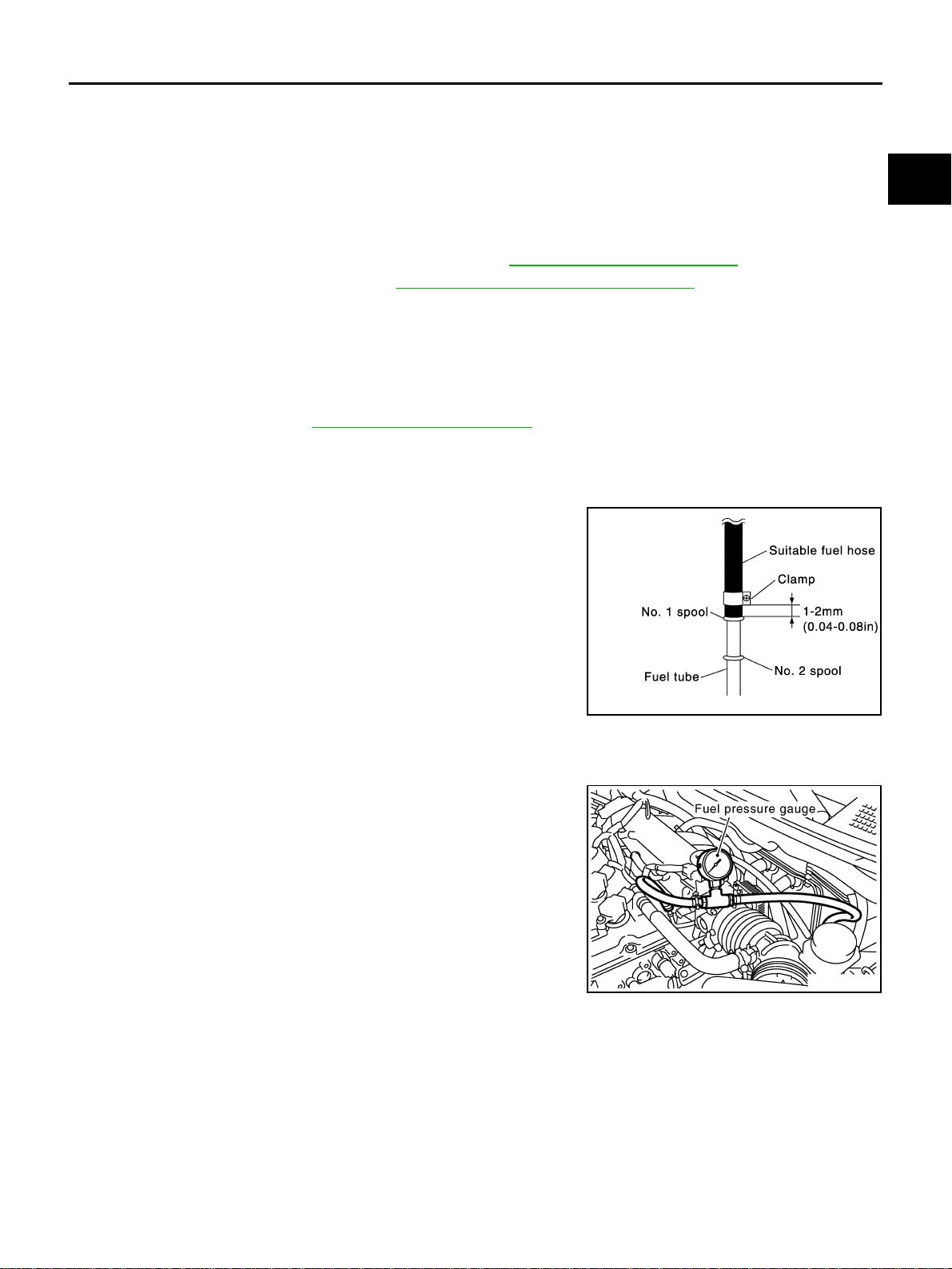Loading ...
Loading ...
Loading ...

BASIC SERVICE PROCEDURE
EC-511
[QR (WITHOUT EURO-OBD)]
C
D
E
F
G
H
I
J
K
L
M
A
EC
NOTE:
Prepare pans or saucers under the disconnected fuel line because the fuel may spill out. The fuel pres-
sure cannot be completely released because T30 models do not have fuel return system.
CAUTION:
● The fuel hose connection method used when taking fuel pressure check must not be used for
other purposes.
● Be careful not to scratch or put debris around connection area when servicing, so that the quick
connector maintains sealability with O-rings inside.
● When installing fuel hose quick connector, refer to EM-17, "INTAKE MANIFOLD" .
1. Release fuel pressure to zero. Refer to EC-510, "
FUEL PRESSURE RELEASE" .
2. Prepare fuel hose and fuel hose clamp for fuel pressure check, and connect fuel pressure gauge.
● Use suitable fuel hose for fuel pressure check (genuine NISSAN fuel hose without quick connector).
● To avoid unnecessary force or tension to hose, use moderately long fuel hose for fuel pressure check.
● Do not use the fuel hose for checking fuel pressure with damage or cracks on it.
● Use Pressure Gauge to check fuel pressure.
3. Remove fuel hose. Refer to EM-17, "
INTAKE MANIFOLD" .
● Do not twist or kink fuel hose because it is plastic hose.
● Do not remove fuel hose from quick connector.
● Keep the original fuel hose to be free from intrusion of dust or foreign substances with a suitable cover.
4. Install the fuel pressure gauge as shown in the figure.
● Wipe off oil or dirt from hose insertion part using cloth moist-
ened with gasoline.
● Apply proper amount of gasoline between top of the fuel tube
and No.1 spool.
● Insert fuel hose for fuel pressure check until it touches the
No.1 spool on fuel tube.
● Use NISSAN genuine hose clamp (part number: 16439
N4710 or 16439 40U00).
● When reconnecting fuel line, always use new clamps.
● When reconnecting fuel hose, check the original fuel hose for
damage and abnormality.
● Use a torque driver to tighten clamps.
● Install hose clamp to the position within 1 - 2 mm (0.04 - 0.08
in).
● Make sure that clamp screw does not contact adjacent parts.
5. After connecting fuel hose for fuel pressure check, pull the hose
with a force of approximately 98 N (10 kg, 22 lb) to confirm fuel
tube does not come off.
6. Turn ignition switch ON, and check for fuel leakage.
7. Start engine and check for fuel leakage.
8. Read the indication of fuel pressure gauge.
● Do not perform fuel pressure check with system operating. Fuel pressure gauge may indicate false
readings.
● During fuel pressure check, confirm for fuel leakage from fuel connection every 3 minutes.
9. If result is unsatisfactory, go to next step.
10. Check the following.
● Fuel hoses and fuel tubes for clogging
Tightening
torque:
1 - 1.5 N·m (0.1 - 0.15 kg-m, 9 - 13 in-lb)
At idling: Approximately 350 kPa (3.5 bar, 3.57 kg/cm
2
, 51 psi)
PBIB0669E
PBIB1977E
Loading ...
Loading ...
Loading ...